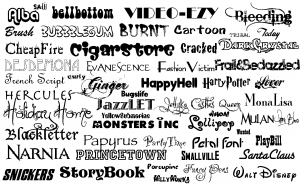 With literally thousands of typefaces available, it is no small matter to determine which ones to use for a specific document. In this issue we’ll present some guidelines to assist you in narrowing the choices, as well as information about increasing the effectiveness of the type you select.
With literally thousands of typefaces available, it is no small matter to determine which ones to use for a specific document. In this issue we’ll present some guidelines to assist you in narrowing the choices, as well as information about increasing the effectiveness of the type you select.
Defining the Task
Regardless of the document you are preparing – brochure, newsletter, flyer, training manual, or direct mail marketing piece – your first task is to be sure the typeface you select promotes readability and comprehension for your audience. In turn, this requires careful attention to a typeface’s legibility.
Readability refers to how the letters interact when combined into words, sentences, and paragraphs. Legibility refers to the clarity of the type – how easily one letter can be distinguished from another.
Next, think about what you must accomplish with the document. The goal of a brochure is much different compared to the goal of an annual report or newsletter. For instance, a brochure must engage the reader’s interest quickly and tell a convincing story, while an annual report consisting of large blocks of text with charts and financial tables must explain without fatiguing the reader. For a newsletter, eye-catching headlines and an informal look may be the goal.
Then consider the demographics of the intended audience. What is the age range, educational level, attention span, and vocabulary of those you are addressing? Different typefaces appeal to different audiences: seniors look for clarity and legibility; teens are drawn to edgy, unusual type even at the expense of readability; children and beginning readers prefer larger, easy-to-read fonts.
Finally, think about how much reading you are requiring of your audience and what message you want them to take away. The more text your document contains, the more readable the font must be.
